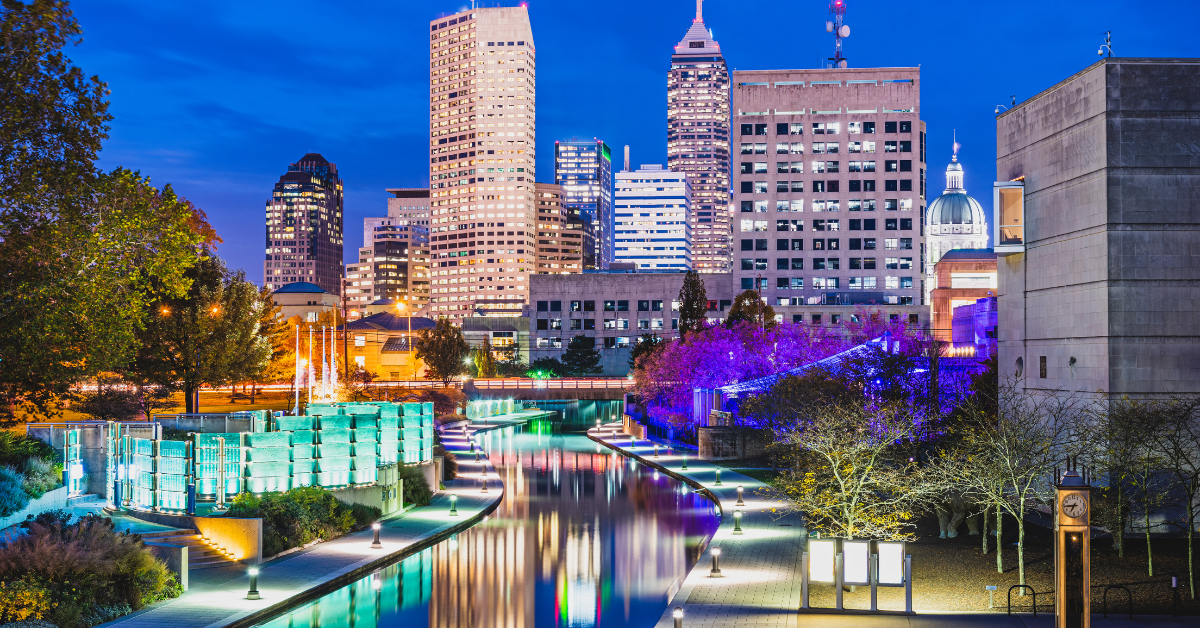Indianapolis, the capital of Indiana, is often recognized by Japanese people as the home of the legendary Indy 500. However, this city offers far more than just motorsports. With its museums, universities, natural parks, and professional sports teams, it is increasingly seen as a well-rounded city where culture, sports, and lifestyle coexist.
Representative Images Japanese People Hold of Indianapolis
The Holy Land of Motorsport
When it comes to Indianapolis, the Indy 500 cannot be overlooked. As one of the three greatest races in the world, it is widely covered in Japanese news and sports media. Especially, Takuma Sato’s two victories gave Japanese people a strong reason to feel connected to Indianapolis.
On race day, hundreds of thousands of spectators gather, and the entire city is filled with festival-like excitement. Since Japan rarely has car racing events of this scale, Japanese visitors tend to see Indianapolis as a “city of overwhelming scale and speed.”
A City of Diverse Sports
Indianapolis is not only about motorsports—it is a city with a strong culture of various sports.
- NFL team Indianapolis Colts
- NBA team Indiana Pacers
- College basketball as a cultural phenomenon
In particular, the NBA has become increasingly popular in Japan, partly thanks to Rui Hachimura’s success, and many Japanese fans are introduced to Indianapolis through the Pacers.
Popular Sports in Indianapolis
| Sport | Team/Event | Japanese Impression |
|---|---|---|
| Motorsport | Indy 500 | World-class race, Takuma Sato’s achievements |
| American Football | Indianapolis Colts | Famous for winning the Super Bowl |
| Basketball | Indiana Pacers | Historic NBA team with international popularity |
| College Basketball | NCAA Final | Surprised by the intensity of student sports culture |
A City of Culture and History
Indianapolis also has a rich cultural side in addition to sports.
The Children’s Museum of Indianapolis, the largest children’s museum in the world, is one of the most famous attractions and is often recommended in Japanese travel guides. Japanese visitors particularly value its educational exhibits, ranging from dinosaurs to space exploration.
The city also has many historical buildings and monuments that allow visitors to learn about American history. With frequent music and theater performances, Indianapolis gives Japanese people the impression of a city where arts and entertainment coexist.
Cultural Facilities Popular Among Japanese Visitors
| Facility | Features | Japanese Evaluation |
|---|---|---|
| Children’s Museum | Wide exhibits from dinosaurs to space | Popular with families |
| Indianapolis Museum of Art | Collections from modern to ancient art | A place for calm appreciation |
| Historical Monuments | Learn about the Civil War and state history | A place for learning American history |
| Music Venues | Jazz and classical concerts | Impression of a lively cultural city |
Nature and Livability
Indianapolis is a city where urban life and nature coexist. White River State Park and the Canal Walk are popular relaxation spots for both residents and tourists.
The cost of living is significantly lower than in cities like New York or Los Angeles. Affordable housing and lower prices make it attractive to Japanese visitors and residents. However, the limited number of Japanese restaurants and Japanese-speaking medical services remains a challenge for long-term residents.
Living Environment in Indianapolis
| Aspect | Advantages | Disadvantages |
|---|---|---|
| Cost of Living | Cheaper than major U.S. cities | Dining options are limited |
| Housing | Spacious homes at affordable prices | Heavy reliance on cars |
| Natural Environment | Parks and river walks are well maintained | Winters are harsh |
| Japanese Community | Calm living environment | Few Japanese-oriented services |
Education as a Strength of the City
Indianapolis also has a reputation as an educational hub. The city is home to several universities and research institutions, making it an appealing place for Japanese students to study abroad.
Particularly notable are research areas such as sports science and medicine, which provide opportunities for practical, hands-on learning not often available in Japan. For Japanese students, the freedom and diversity of American education is a major attraction.
Japanese Impressions of Education in Indianapolis
| Field | Features | Japanese Evaluation |
|---|---|---|
| University Education | Wide range of majors and practical curricula | Easy environment for international students |
| Research | Strong in medicine and sports science | Offers future-oriented learning |
| Student Sports | Nationwide events like NCAA tournaments | Unique, energetic atmosphere |
| Safety | Generally stable and calm environment | Safe for studying abroad |
Overall Pros and Cons for Japanese Perception
To summarize, here are the overall advantages and disadvantages Japanese people tend to associate with Indianapolis.
| Perspective | Perceived Advantages | Perceived Disadvantages |
|---|---|---|
| Tourism | Indy 500, museums, and cultural facilities | Less internationally recognized compared to other U.S. cities |
| Lifestyle | Affordable cost of living, rich in nature | Limited Japanese food and healthcare |
| Education | Strong study abroad opportunities | Less global exchange compared to major cities |
| Sports | Rich in motorsport, NFL, and NBA | Information not widely available in Japan |
Conclusion
For Japanese people, Indianapolis is evolving from the image of a “city of car racing” into a city of multiple attractions. Visitors can experience the excitement of the Indy 500, NFL, or NBA games, while also enjoying museums, theaters, and parks. It is also a comfortable city to live in, with affordable costs and opportunities for education and research.
In short, Indianapolis represents a city where sports, culture, education, and livability all come together. For Japanese people, it is increasingly seen not only as a motorsport capital but also as one of the most livable American cities. With stronger international outreach, Indianapolis could become even more familiar and attractive to Japanese audiences in the future.






